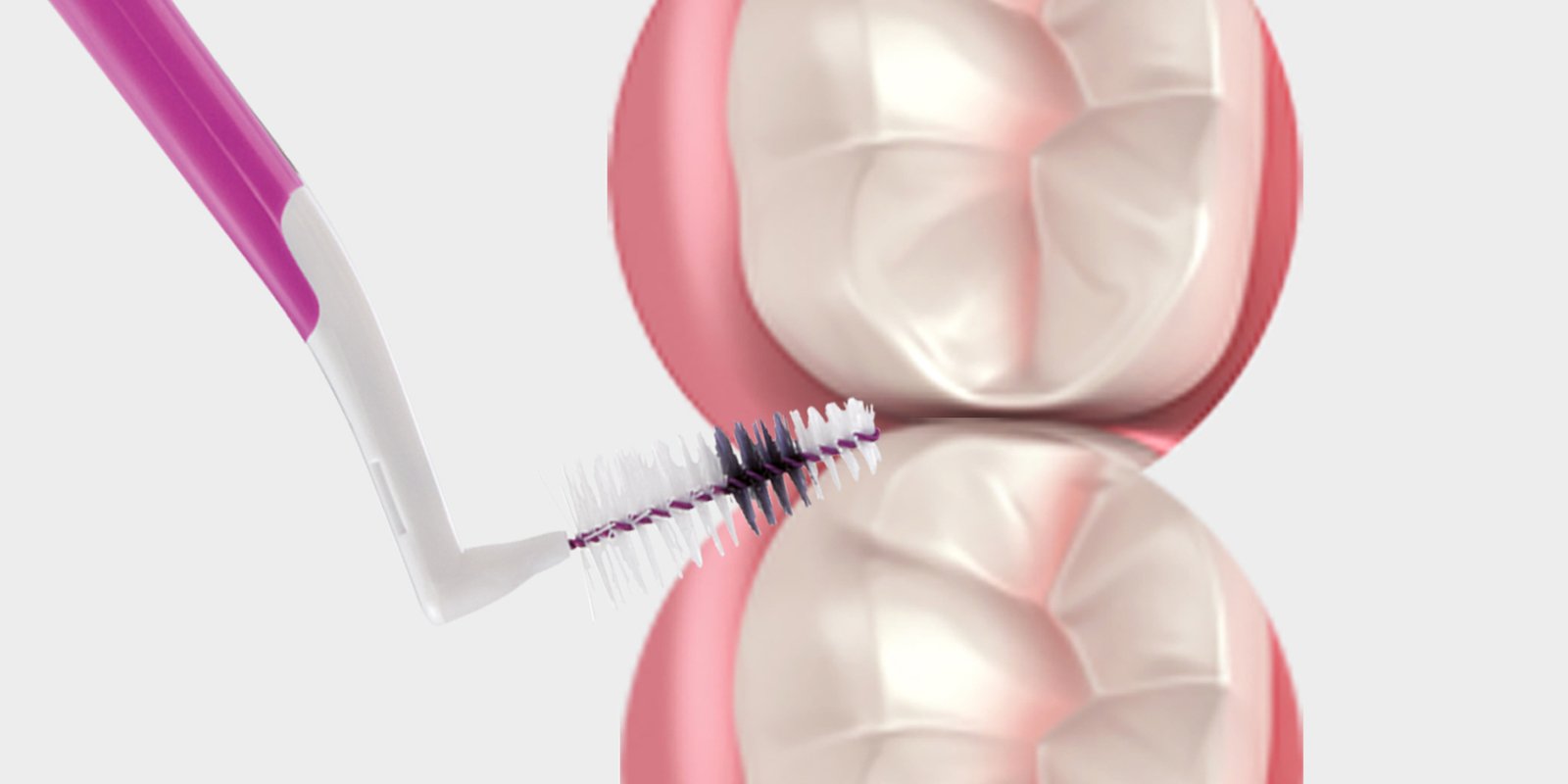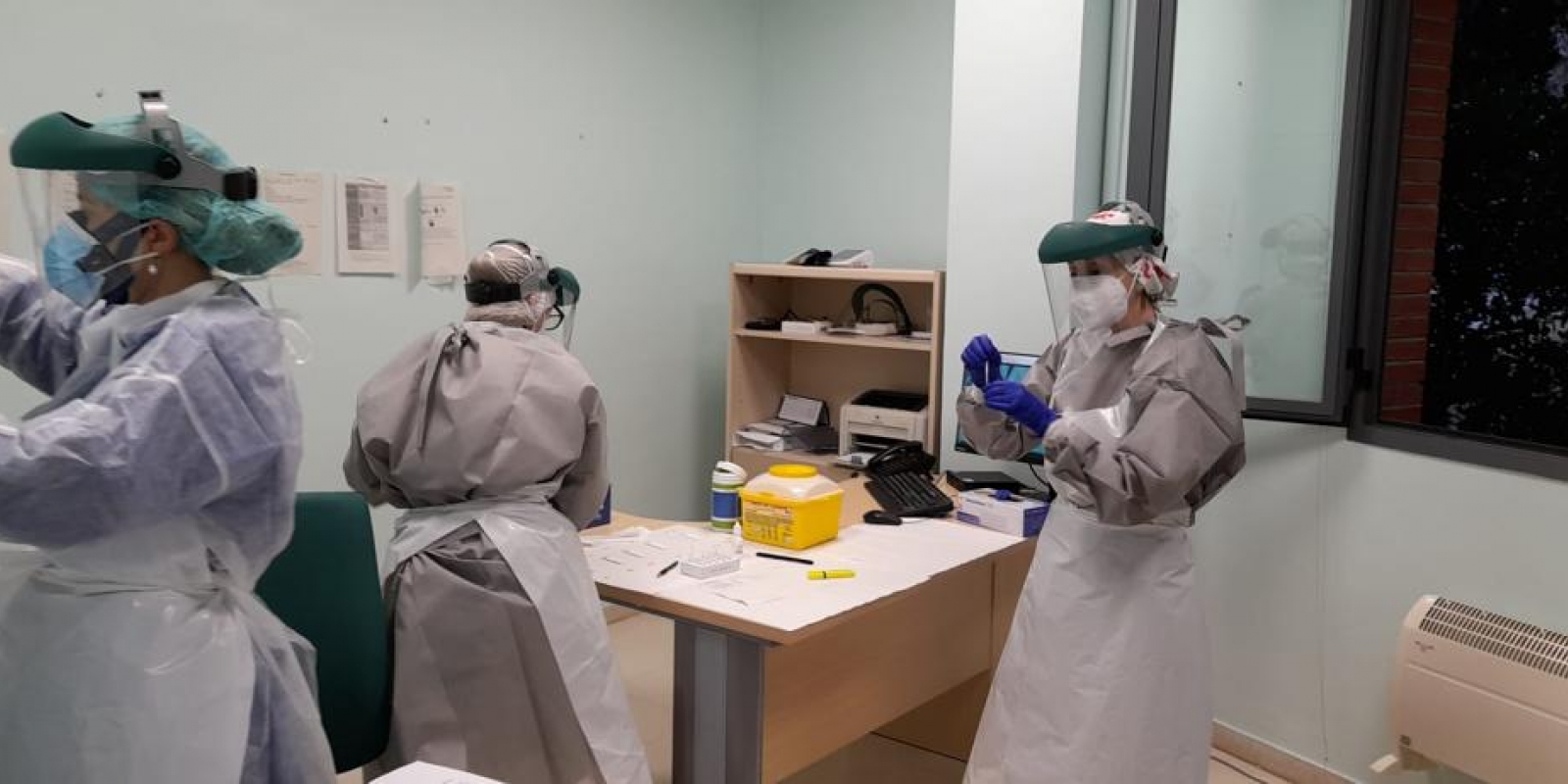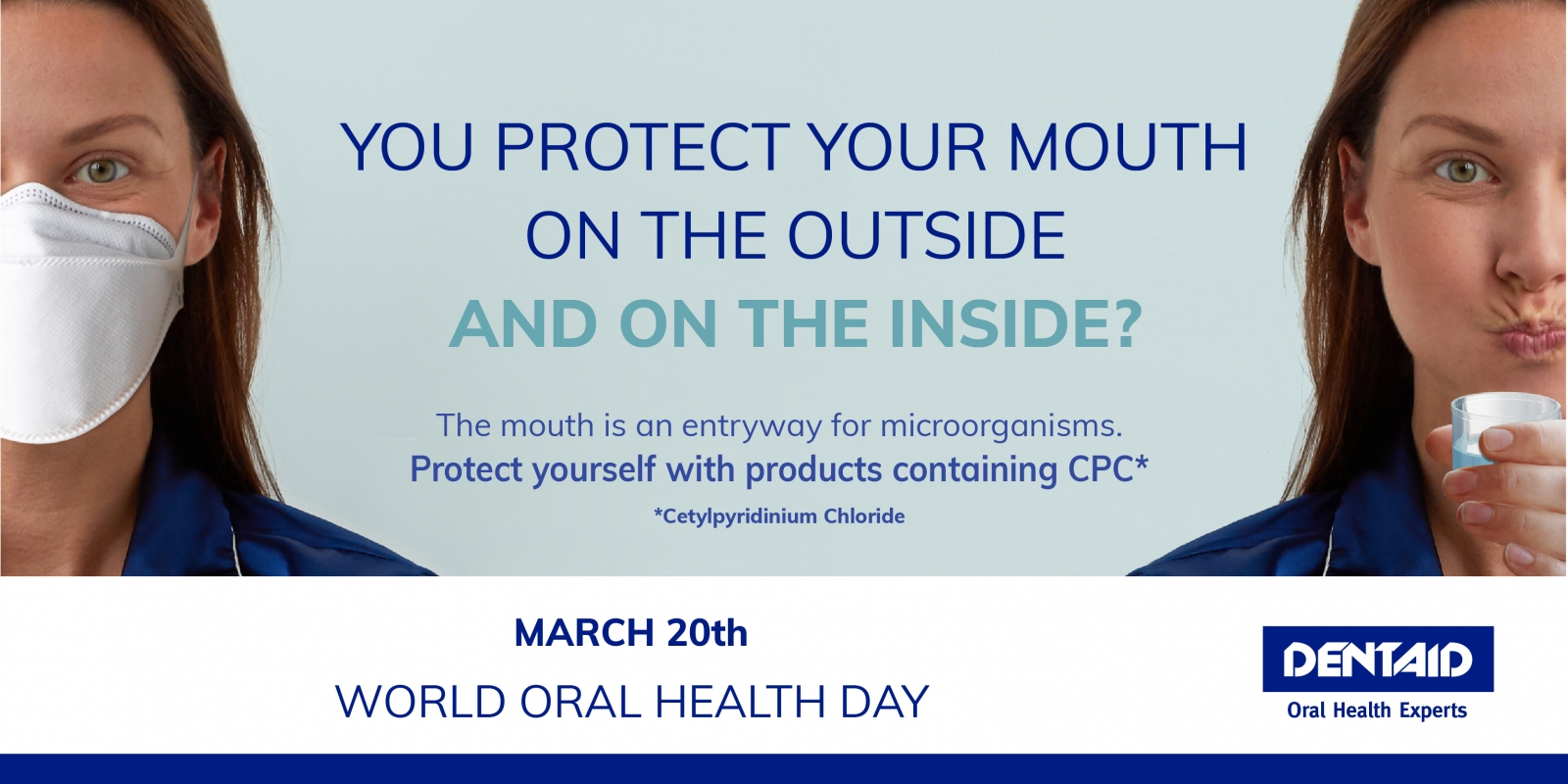DENTAID EXPERTISE
News for dentistry professionals
Interproximal hygiene is synonymous with health and wellbeing

Properly cleaning interdental spaces not only significantly improves oral health, but it also helps prevent certain pathologies and provides greater wellbeing and quality of life.
As is generally known, interproximal hygiene is the cleaning of interdental, or interproximal spaces. Anatomically, the interproximal space is demarcated corono-apically by the point or area of contact between the teeth, by the proximal dental surfaces and by the margin of the supracrestal gingival tissue or interdental papillae and, buccal-palatally or lingually, by the proximal surfaces and by the interdental embrasures.
In a proper state of health, the papilla usually occupies the entire interproximal space; but over time, due to certain treatments and especially to periodontal disease, the papilla may recede and lead to the appearance of black gaps or triangles between the teeth.
DISEASES AND DISORDERS STEMMING FROM POOR INTERPROXIMAL HYGIENE
The interproximal space is undoubtedly a difficult area to clean, and neglecting to do so, causes build-up of bacterial plaque, i.e. interdental biofilm, which is the main aetiological agent of the most prevalent oral pathologies and disorders: caries, periodontal diseases, peri-implant diseases and halitosis.
Caries is a chronic, multifactorial disease initiated by acidic and acidogenic bacteria. In Spain, the prevalence of caries in primary dentition, at five or six years of age, is 31%. In permanent dentition, it is 33% at age 12 and 43% at 15, while among adults, it is between 95% and almost 100%. Although the prevalence and severity of dental caries has decreased substantially in most industrialised countries in the past two decades, this preventable disease remains a common public health problem in many parts of the world. Also, most caries in young adults originate in the interproximal areas.
Periodontal diseases, which include gingivitis and periodontitis, are infectious-inflammatory in nature and as they progress, they destroy the supporting tissues of the teeth and can cause their loss. The prevalence of periodontal disease is very high in Spain, and according to a recent epidemiological study, it seems only 5% of adults are free of periodontal disease. Periodontitis affects some 12½ million people in Spain. Classical studies have already shown that periodontitis originates most frequently in the interproximal areas.
The aetiopathogeneses of peri-implant diseases (including peri-implant mucositis and peri-implantitis), is similar to that of periodontal diseases, and their prevalence is also very high. According to a recent study conducted at a significant number of clinics in Spain, the percentage of patients with mucositis is 27%, and that of patients with peri-implantitis 24%, while the cut-off point of bone loss is two millimetres.
Intra-oral halitosis is the malodour from the mouth or bad breath noticeable by others when breathing or speaking, and accounts for about 90% of all cases of halitosis. The origin of the malodour is in the mouth itself, above all in those areas that can harbour bacteria that produce foul-smelling volatile sulphur compounds (VSC), mainly in the interdental spaces and on the tongue. It is estimated that between 30% and 50% of the population suffers or has suffered from halitosis.
All of these pathologies can cause a considerable decline in quality of life, since the loss of teeth, and even dental implants, cause occlusion-related problems, including increased tooth wear, and primary and secondary occlusal trauma, impaired masticatory function, and thus both digestive and nutritional problems, speech disorders, as well as affecting one’s smile, a key factor in self-esteem. Studies have confirmed that the greater the number of missing teeth, the worse the quality of life.
Last but not least, the relationship between periodontitis in its most advanced forms and systemic diseases has been undergoing studies for years. The mechanisms suggested for these are of two types. On the one hand, bacteraemia might occur causing microorganisms and/or their products to pass into the bloodstream and move elsewhere in the body. Once there, they might cause an inflammatory response similar to that occurring in the gums.
On the other hand, another mechanism involves inflammatory mediators occurring in the gums, which might also travel through the bloodstream and reach other tissues, or that the liver might react due to these inflammatory compounds by producing acute phase reactants such as C-reactive protein. In this respect, the studies that show greatest robustness are those that relate periodontal disease with diabetes, with cardiovascular diseases, and with adverse pregnancy outcomes, specifically with pre-term delivery and low birth weight.
WHY INTERPROXIMAL HYGIENE IS SO IMPORTANT
The interproximal hygiene tools available must ensure the disruption and elimination of the interdental biofilm on the one hand, and the reduction and control of gum inflammation on the other. We detail below a set of scientific publications that support the use of these interproximal hygiene tools.
In the 1st Iberian Workshop on plaque control and oral hygiene, it was concluded that the joint use of manual brushing and different interproximal hygiene systems (floss and brushes) improves interdental plaque control compared with manual brushing, with an increased effect of between 2.5% and 57%.
As for the prevention of gingivitis, the additional effect ranges between 2.5 and 43%. Regarding comparison between both interproximal hygiene methods, it was shown that there is greater motivation to use interproximal brushes, since ease of use and comfort is greater than for flossing, and to be effective, flossing requires instruction and training. In fact, flosses and tapes do not enjoy the same scientific endorsement as interproximal brushes, due precisely to the difficulty of using them properly.
A randomised clinical trial conducted on patients with chronic periodontitis showed that with interdental cleaning, especially with interproximal brushes, patients were able to improve clinical periodontal outcomes before root surface debridement. These results can be used as a source of encouragement for periodontal patients to thereby increase compliance and maintain the results of non-surgical periodontal therapy.
In another trial involving healthy young subjects, it was found that most interdental spaces can be cleaned with interproximal brushes. According to this study, and because interdental hygiene requirements are very strict, it was concluded that the specific use of interproximal brushes can have a primary preventive effect on the health of the entire population and that examining interdental space accessibility should be routine for all patients.
The most important review made to date determined that interdental cleaning with interproximal brushes is the most effective method for removing interdental plaque and that most interdental hygiene tools have an effect, albeit variable, on gingivitis.
Finally, a recently published study, in which dental and periodontal clinical variables were related retrospectively to the use and frequency of interdental cleaning in a very large population in the United States, found that interdental cleaning is associated with a lower incidence of periodontal disease, a decrease in coronal and interproximal caries and fewer cases of tooth loss.
Likewise, regular interdental cleaning (four to seven times a week) was associated with a lower incidence of interproximal periodontal disease. Improvements and benefits that more frequent interdental cleaning can have on oral health were even demonstrated in certain disease categories. All these data confirmed the use of interdental cleaning tools as a valid oral hygiene habit to foster good health.
CONCLUSION
In summary, it can be concluded that most oral diseases commence in the interproximal space, that these pathologies have local and even systemic implications, and that scientific evidence supports the use of interdental hygiene tools for the control of plaque and gingivitis: dental floss for closed spaces and interproximal brushes for open spaces. It may thus be said that cleaning interproximal spaces does not only save teeth, but it can also improve quality of life and even prolong life.
About the Author
Periodontist and Medical Advisor at DENTAID
Bibliography
- Bravo Pérez M, y cols. Encuesta de Salud Oral en España 2015.
- Demirci M, Tuncer S, Yuceokur AA. Prevalence of caries on individual tooth surfaces and its distribution by age and gender in university clinic patients. Eur J Dent 2010; 4 (3): 270-279.
- Carasol M, Llodra JC, Fernández-Meseguer A, Bravo M, García-Margallo MT, Calvo-Bonacho E, Sanz M, Herrera D. Periodontal conditions among employed adults in Spain. J Clin Periodontol 2016; 43 (7): 548-556.
- Becker W, Berg L, Becker BE. Untreated periodontal disease: a longitudinal study. J Periodontol 1979 May; 50 (5): 234-244.
- Rodrigo D, Sanz-Sánchez I, Figuero E, Llodrá JC, Bravo M, Caffesse RG, Vallcorba N, Guerrero A, Herrera D. Prevalence and risk indicators of peri-implant diseases in Spain. J Clin Periodontol 2018 Dec; 45 (12): 1.510-1.520.
- Roldán S, Serrano J, Herrera D. Halitosis, conceptos y manejo clínico. SEPA divulgación.
- Linden GJ, Lyons A, Scannapieco FA. Periodontal systemic associations: review of the evidence. J Periodontol 2013 Apr; 84 (4 Suppl.): S8-S19.
- 1er Workshop ibérico de control de placa e higiene bucodental. Periodoncia y Osteointegración; vol. 14 (2): abril-junio 2004.
- Jackson MA, Kellett M, Worthington HV, Clerehugh V. Comparison of interdental cleaning methods: a randomized controlled trial. J Periodontol 2006 Aug; 77 (8):1.421-1.429.
- Carrouel F, Llodra JC, Viennot S, Santamaria J, Bravo M, Bourgeois D. Access to interdental brushing in periodontal healthy young adults: A cross-sectional study. PLoS One 2016 May 18; 11 (5): e0155467.
- Sälzer S, Slot DE, Van der Weijden FA, Dörfer CE. Efficacy of inter-dental mechanical plaque control in managing gingivitis – a meta-review. J Clin Periodontol 2015; 42 (Suppl. 16): S92-S105.
- Marchesan JT, Morelli T, Moss K, Preisser JS, Zandona AF, Offenbacher S, Beck J. Interdental cleaning is associated with decreased oral disease prevalence. J Dent Res 2018 Jul; 97 (7): 773-778.
RELATED ARTICLES

14 Dec 2021
A recent study shows the efficacy of mouthwashes containing CPC in patients with COVID-19
Investigators from the Aragonese Health Service and the Health Research Institute of Aragon conducted a clinical trial in Primary Care with the aim of…

18 Nov 2021
Laboratory studies prove that CPC in mouthwashes is effective against different variants of SARS-CoV-2 thanks to its mechanism of action
INTRODUCTION The oral cavity is a route of entry, infection and transmission of microorganisms, including the SARS-CoV-2 coronavirus. Several…

16 Mar 2021
World Oral Health Day: What role does the oral cavity play during SARS-CoV-2 infection?
At DENTAID, we want to highlight the important role that oral health plays. Coinciding with World Oral Health Day, we have launched an awareness…
Sign up for the DENTAID Expertise newsletter
Sign up for the newsletter